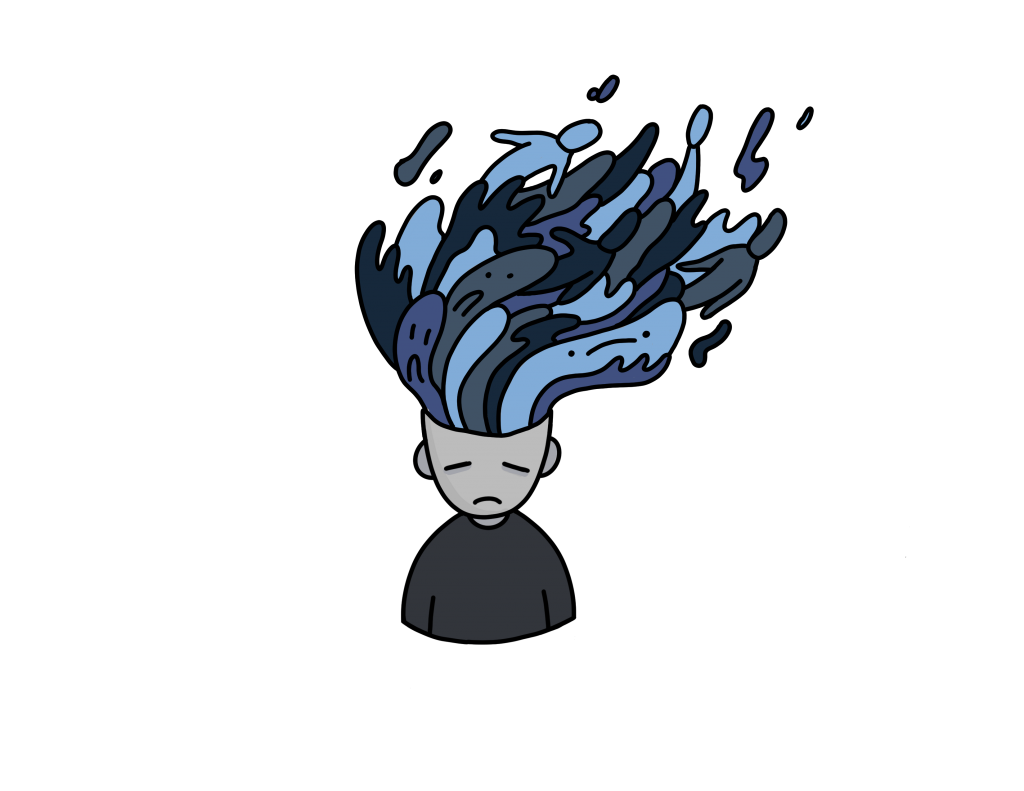
All classes end the same way: a curt nod from the teacher, a wave of goodbyes from classmates, and a Zoom call of 30 participants disbanded within seconds. Palo Alto High School Junior Kyoka Hiroshima watches as her classmates’ faces disappear one by one until she is left alone — facing her blank laptop screen.
Hiroshima is one of many students experiencing heightened feelings of loneliness and a loss of motivation due to the isolation that has come with the COVID-19 pandemic. With online school playing a key role in increasing seclusion from friends and family, students and experts have shared valuable strategies for making online learning and post-pandemic life easier.
Mental health decline
The recent lockdown has changed the lives of many, from drastic shifts in daily routines to the mental health of students. Over the past year, Paly Sources of Strength club member and senior Sabrina Chan has observed a worsening in students’ stress levels and overall emotional wellbeing.
“I do see that there’s [an] overall decline in mental health,” Chan said. “For a lot of people, [the pandemic] is like this never-ending tunnel which can really take a toll on your mental health, especially when you rely on social interactions to help keep your mental health stable.”
This change was also noticed by Paly Advanced Placement Psychology teacher Christopher Farina.
“Overall, we are seeing an uptick in all kinds of … negative mental health outcomes,” Farina said. “We are seeing more people endorsing symptoms of anxiety [and] we are seeing an increase in the number of people that are reporting symptoms of depression.”
Since school transitioned to the distance learning format, many students, including Hiroshima, have experienced the wearisome nature of attending hours of daily Zoom calls.
“We used to have different school days every day, constantly interacting with new people and fulfilling our need for social interaction,” Hiroshima said. “Now I can barely remember what day it is. Every task feels so robotic and it’s so easy … [to] not care about schoolwork because it [has] felt so useless the past 14 months.”
“We know from psychology that your environment dictates a lot of your behavior and your cognition.”
— Christopher Farina, psychology teacher
Online learning has also limited opportunities for students to spend time with their friends, further detaching them from the outside world. For Chan, the string of Zoom calls has socially confined her within her own home.
“I don’t think I have even talked with my parents or my brother that much, because we’re just all in our different rooms on calls the whole day,” Chan said. “It just hit me like, wow, this is what this year has come to — just sitting in my bedroom on a call with 20 other people every hour.”
The extensive isolation is beginning to raise concerns of the possible long term effects of the pandemic on students’ mental health. Elizabeth Spector, Paly’s Mental Health and Wellness coordinator, mentioned the importance of acknowledging anxiety and depression that results from prolonged isolation. However, both Spector and Farina are unsure of whether these feelings will persist after the lockdown orders are lifted.
“It’s too early to say if there will be any long-term impacts from the sudden upheaval of normal, everyday life and the extended isolation,” Spector said. “Social anxiety could increase and we anticipate some short-term impact on social skills for children, teens and adults alike.”
While experts are unsure about how teenagers will be impacted long-term, teenage resiliency leads Farina to predict that most students will be able to readjust back into normal life.
Learning from loneliness
Despite the many hardships faced during lockdown, some students have developed strategies to lessen the impacts of loneliness and improve their overall well-being while in isolation.
Alternating between school and home during the distance learning format has made it difficult for students to distinguish work from relaxation. Farina explained this concept from a psychological standpoint.
“We know from psychology that your environment dictates a lot of your behavior and your cognition … that if you learn something in a particular environmental context you’re best able to retrieve that information in that same context as well,” Farina said. “It’s really helpful to be able to have certain things happen in certain places and not others … if you are at your house, you have your room as a relaxing spot, then you could have another desk… that is your work spot.”
“It’s too early to say if there will be any long-term impacts from the sudden upheaval of normal, everyday life and the extended isolation.”
— Elizabeth Spector, mental health and wellness coordinator
While separating spaces may help ease some stresses of online learning, many students experience difficulties that require solutions that extend beyond organization. Spector urges those having a tough time to reach out to a trusted adult and to find professional support as soon as they can.
“Sometimes teens worry that their problems aren’t ‘significant enough’ to warrant therapy,” Spector said. “I want to dispel that myth. Everyone can benefit from therapy, and the sooner you reach out, the sooner you are able to address what is going on and gain tools, skills and insights to help you cope.”
She also reminded students to go at their own pace and check in with themselves as they readjust to normal life.
“Have your toolbox of coping skills readily available,” Spector said. “By tackling the elements of your anxiety little by little, and setting small attainable goals, you will gain the confidence and skills to be able to overcome these fears.”



